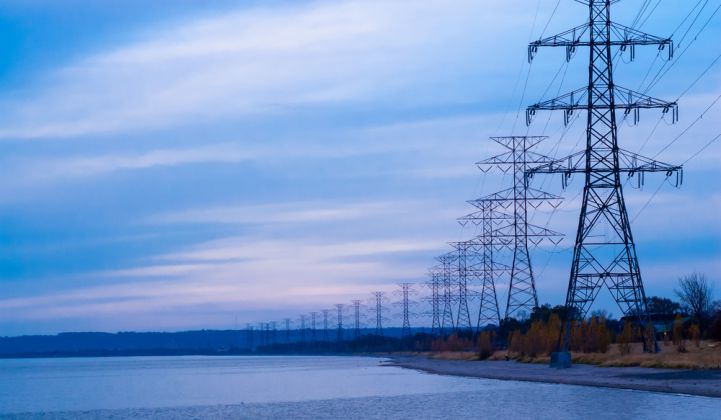Months after President Trump signed the Tax Cuts and Jobs Act, some customers may soon receive returns from their utilities.
Nearly every state utility commission in the nation, plus Washington, D.C.’s commission, has started some type of order or investigation asking utilities to assess the impacts of the law. Greentech Media spoke with regulators at nearly all of them.
“The vast majority of them are saying they need to do something,” said Ken Costello, a principal researcher with the National Regulatory Research Institute, the research arm of the National Association of Regulatory Utility Commissioners. “Some are opening proceedings; some are asking utilities to calculate the tax savings and report to them. New York is having a technical conference where all the utilities will come in and give their estimates, and then there will be a discussion. In a few cases, there are rate cases going on.”
The new 21 percent corporate tax rate impacts both a utility's annual income tax and its deferred income tax. While a reduction in annual taxes can be directly transferred to customers, deferred tax makes for a trickier calculation.
“They can’t just give it all back to the customers,” said Costello. “They have to distribute it back over the life of the assets.”
Many utilities nationwide are now assessing how, and if, that money will go directly to ratepayers.
In some cases, utilities undertook assessments of their own volition. But in nearly every state, utility commissions have now asked for details from all regulated utilities on how the updated rate impacts business.
The exception lies with Vermont. Though Green Mountain Power (whose service territory includes much of the state) said it intends to pass savings to customers, Commission Clerk Judith Whitney said the PUC has not undertaken a formal process for the 16 other electric utilities it regulates.
Nebraska is also an outlier. It’s the only state in the country served entirely by consumer-owned power entities, which are not-for-profit.
The remaining commissions initiated dockets, investigations or orders in late December, January and February.
A cash windfall
For utilities that have already submitted filings, the changes mean a windfall of millions of dollars.
In Montana, for instance, commission vice chairman Travis Kavulla said NorthWestern Energy plans to return $15 million to $20 million annually and $321 million in reduced deferred tax liability. ComEd in Illinois wants to pass through $200 million to its customers, equaling $2 to $3 on their monthly bills. Alliant Energy's Interstate Power and Light in Iowa said it plans to distribute $16.3 million to customers as soon as possible.
“Utilities are on notice that we expect customers will reap the benefits,” said Dave Danner, chairman of the Washington State Utilities and Transportation Commission.
But the process to put money back in residents’ pockets -- “an incredible Christmas gift for hard-working Americans,” as Trump called it -- isn't yet as simple as dollars deducted from a monthly bill.
“There is some movement by the utilities to say, ‘Well, this is a little bit more complicated,’” said Costello.
Some utilities across the country argue the money they receive from a lower tax rate should go to planned system improvements or needed maintenance.
Florida Power and Light plans to use the money for Hurricane Irma-related repairs, which it estimates to cost $1.3 billion, rather than raising rates to compensate for the damage. Duke Energy in North Carolina proposed using the money to offset part of a current rate request, for storm-related and environmental compliance costs or for accelerating the retirement of some assets, rather than billing customers.
“Some utilities are saying you can’t just look at the…effect that taxes are lower,” said Costello. “Maybe our costs have gone up and other things have changed that you also have to look at.”
“Some utilities are saying you can’t calculate how much should be given back to customers unless you go through a whole rate case,” he added.
Many commissions said they would soon be determining how the savings should impact rates -- Connecticut even reopened its most recent cases. Many plan to incorporate the changes into pending and upcoming cases. But savings might not trickle down to consumers for six months, said Costello.
The irony
As investigations get underway, utilities are wary about quickly passing on savings to customers.
According to Costello, deferred tax forms an integral part of a utility’s cash flow. With some of that money now potentially flowing through to consumers, many utilities will have a tighter balance sheet.
In mid-January Moody’s downgraded rating outlooks for 24 regulated utilities, including Duke Energy and Southern Company, from stable to negative based on the tax law. “Tax reform is credit negative for U.S. regulated utilities because the lower 21 percent statutory tax rate reduces cash collected from customers, while the loss of bonus depreciation reduces tax deferrals,” Moody’s statement read.
“There is a downside to lower taxes, which is sort of ironic,” said Costello.
A January analysis from The Brattle Group recommended utilities investigate creative solutions to this quandary, such as using funds to accelerate retirement of power plants -- just as Duke has suggested -- or on customer education of advancing technologies like EV charging stations.




